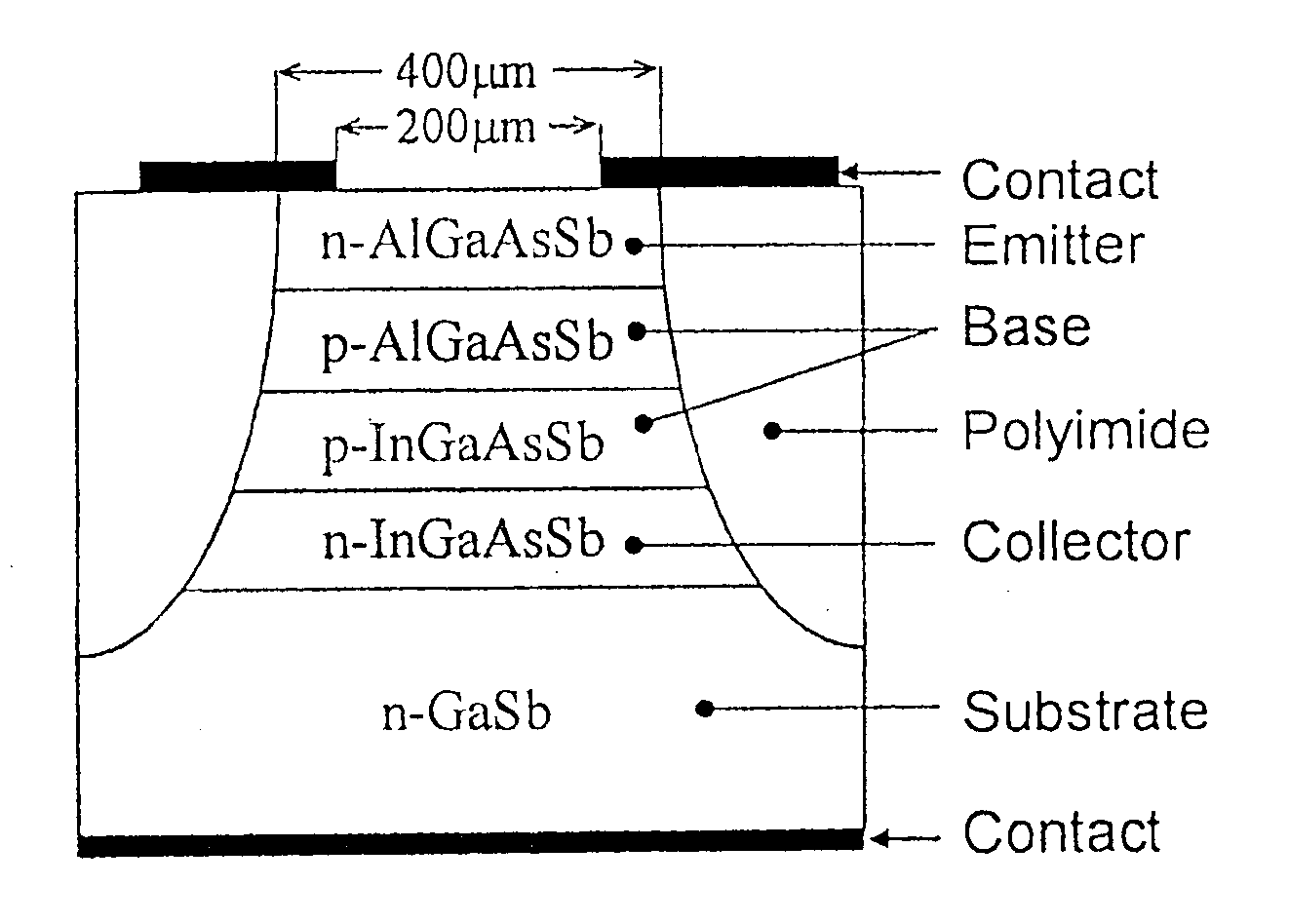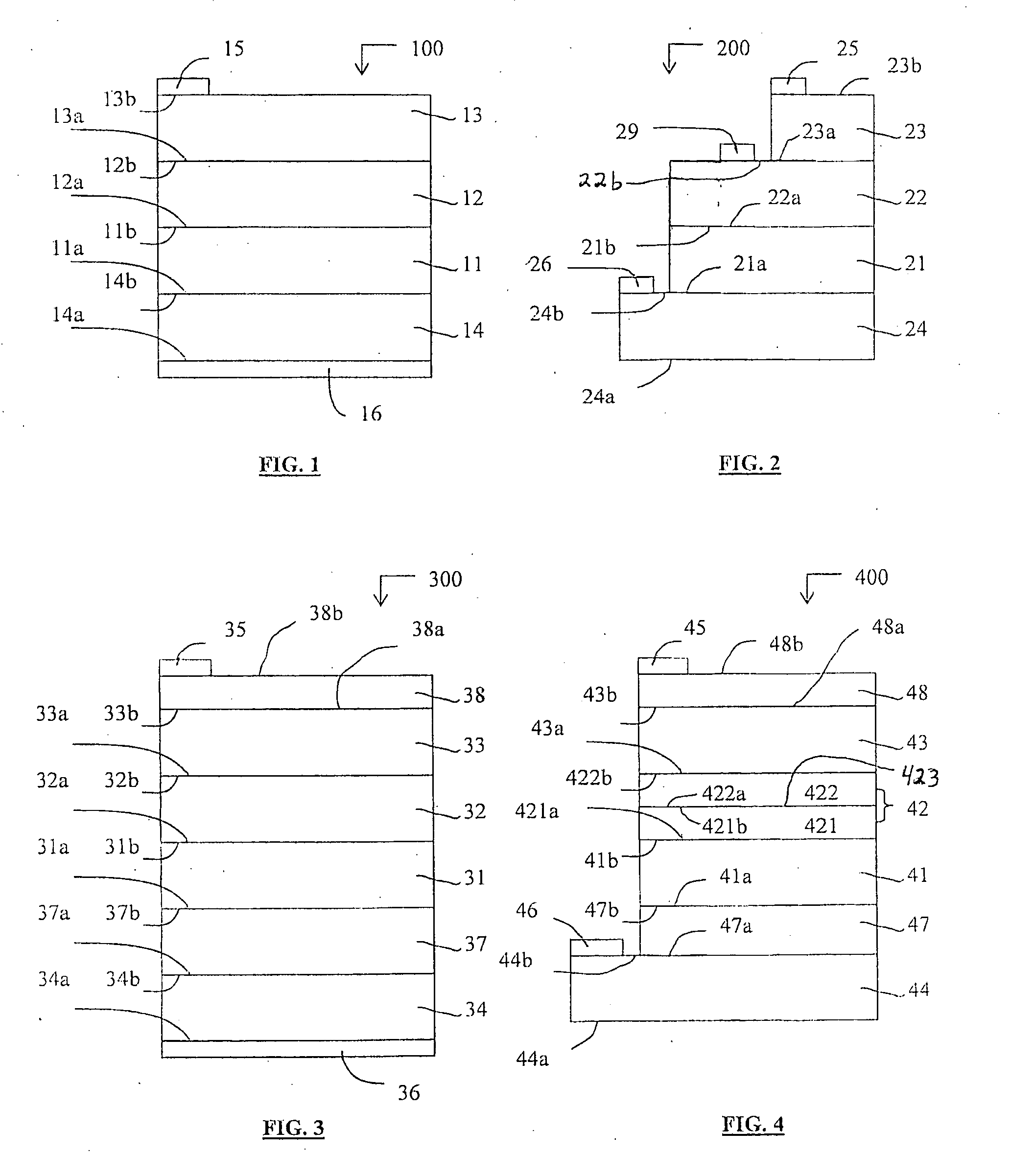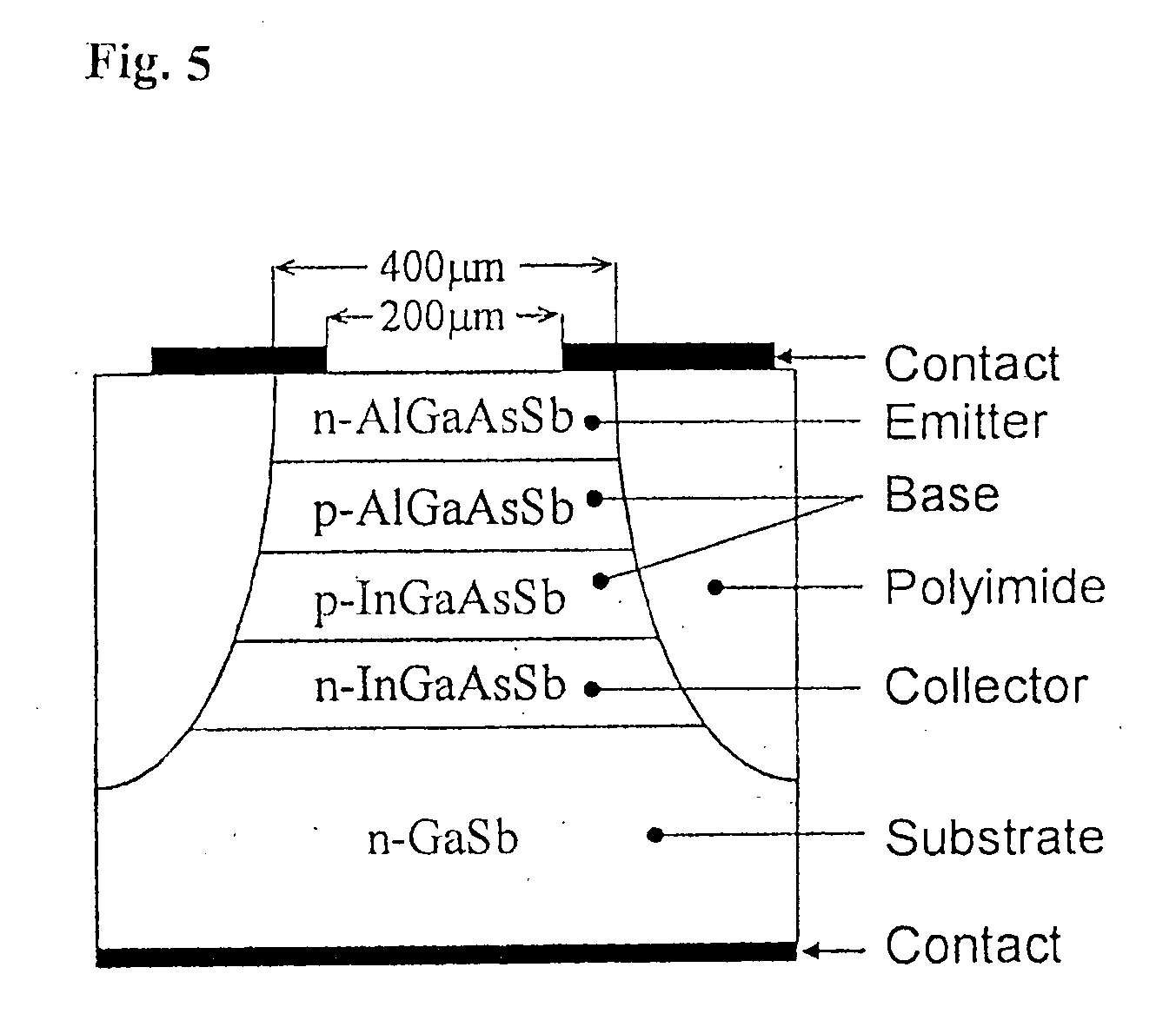Phototransistors, Methods of Making Phototransistors, and Methods of Detecting Light
- Summary
- Abstract
- Description
- Claims
- Application Information
AI Technical Summary
Benefits of technology
Problems solved by technology
Method used
Image
Examples
example
[0088]A device according to the present invention was constructed to he as depicted in FIG. 5. The device according to the present invention used in this Example includes an n-type AlGaAsSb emitter, a p-type composite base consisting of AlGaAsSb and InGaAsSb layers, and an n-type InGaAsSb collector. The collector, the base and the emitter were all lattice-matched to a GaSb substrate and were grown by liquid-phase epitaxy using a horizontal slideboat technique. The bandgap energies of the AlGaAsSb and InGaAsSb layers are 1-1.1 eV and 0.55 eV, respectively, as estimated from chemical composition and spectral response measurements. Mesa phototransistors with a 400 μm diameter total area and a 200 μm diameter active area were defined using photolithography and wet chemical etching. A backside planar and a front side annular ohmic contact, including a bonding pad, were deposited by electron beam evaporation of Au / Sn and Ti / Ni / Au, respectively. A polyimide coating (HD Microsystems PI-2723...
PUM
 Login to View More
Login to View More Abstract
Description
Claims
Application Information
 Login to View More
Login to View More - R&D
- Intellectual Property
- Life Sciences
- Materials
- Tech Scout
- Unparalleled Data Quality
- Higher Quality Content
- 60% Fewer Hallucinations
Browse by: Latest US Patents, China's latest patents, Technical Efficacy Thesaurus, Application Domain, Technology Topic, Popular Technical Reports.
© 2025 PatSnap. All rights reserved.Legal|Privacy policy|Modern Slavery Act Transparency Statement|Sitemap|About US| Contact US: help@patsnap.com



